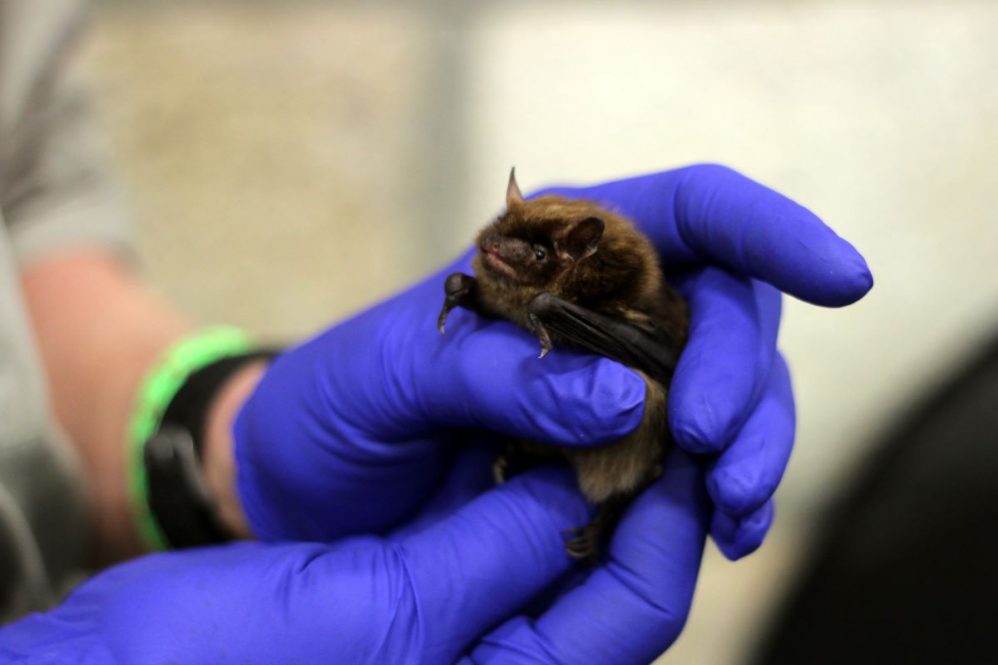The COVID-19 pandemic and the significant impact of emerging variants have shown the importance of understanding viruses in as much detail as possible.
Luckily there are many ways scientists can learn more about zoonotic diseases, like genetic sequencing. Data gathered from detailed genetic sequencing can tell us a lot about a virus, like how it spreads and its evolutionary history.
This same lesson can be applied to another public health concern – rabies in bats.
Dong-Hun Lee, assistant professor of infectious disease epidemiology in the College of Agriculture, Health and Natural Resources recently identified the currently circulating rabies viruses in bats submitted to the Connecticut Veterinary Medical Diagnostic Laboratory (CVMDL) and shared his findings in Viruses.
This study is the first to collect genetic sequencing data from bat rabies viruses in the Northeast.
Bats are the most frequently reported rabid wildlife species in the United States. According to the CDC, bats are responsible for 70% of rabies deaths among people who are infected with the rabies virus in the United States during 1960-2018.
Rabies vaccine can prevent rabies. If an unvaccinated person does not receive appropriate medical care after an exposure, human rabies is almost 100% fatal. In 2021, there were five rabies cases in the United States, three of which were deaths.
“Rabies in bats should be a major public health consideration in the United States,” says Lee, who is a member of the CVMDL and the Department of Pathobiology and Veterinary Science.
Between 2018 and 2019, Lee and Risatti tested 88 bats brought for rabies testing at the CVMDL by community members and local animal control units. These bats did not bite a human; those cases are handled by the Connecticut Department of Public Health.
Of those 88 bats, six tested positive for rabies. Lee and Risatti then sequenced the complete genomes of the rabies viruses.
Guillermo Risatti, professor of pathobiology and director of the CVMDL, is co-author on the paper.
“We are seeing these bats testing positive for rabies,” Risatti says. “The next step is saying ‘okay, what type of viruses are they carrying?”
They identified four unique viruses: three in non-migratory big brown bats and one in a migratory hoary bat. Two samples did not have enough material to sequence.
The viruses in the big brown bats were closest to viruses found in Pennsylvania, New York, and New Jersey. The virus in the hoary bat, however, bore a close genetic relatedness to viruses in Arizona, Washington, Idaho, and Tennessee.
This information emphasizes how migration patterns can move viruses around and potentially allow them to establish in local populations.
The CVMDL is the only laboratory in the state studying rabies in bats in hopes of supporting disease tracking and disease preparedness.
“It’s really important to be ready for future outbreaks,” Lee says. “For epidemiological investigations, we need baseline data. It would be nice to have a baseline before we have an issue.”
Prior to this research, the most recent whole-genome rabies study in bats was from Tennessee in 2004.
These findings will serve as baseline data for a potential future rabies outbreak. Having this level of detailed genetic information will allow scientists to understand how the virus spread and if existing vaccines will be effective.
“In case you have some kind of expansion of a virus, it’s good to know what the viruses look like and what gives them some kind of competitive advantage – that’s why they can expand in a population,” Risatti says. “And at the end of the day, it’s to know if the vaccines are still useful.”
Risatti and Lee say they intend to continue this genomic surveillance on the CVMDL’s bat samples to contribute to the body of genetic information available on rabies viruses. They may also look at other viruses bats could be carrying, such as coronaviruses.
This work was supported through an OVPR Research Excellence Program grant.
Follow UConn CAHNR on social media



